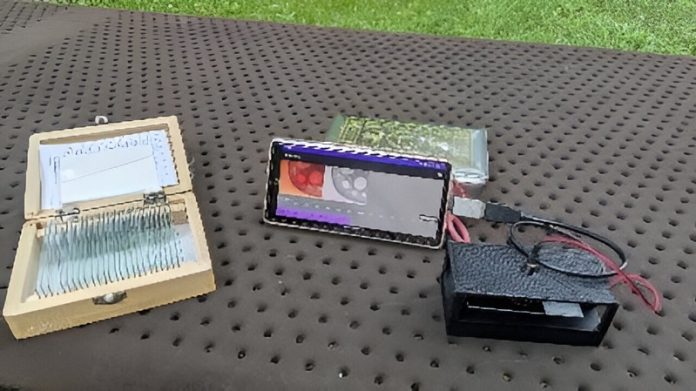
Scientists have developed a new type of microscope that uses a smartphone to create detailed 3D images, known as holograms, with precision.
This affordable and portable microscope could have many uses, such as helping doctors in places with limited resources or providing students with new tools to explore science.
Holographic microscopes work by capturing special patterns of light that reveal a 3D image of a sample, allowing users to measure both the surface and inner details of what they are observing.
These microscopes are usually expensive and require complex equipment, including computers, to process the data and create holograms.
However, researchers from Tokyo University of Agriculture and Technology, led by Yuki Nagahama, have simplified the process by designing a smartphone-based holographic microscope.
This new device uses a 3D-printed optical system and an app that can process the holograms directly on a smartphone, making it much easier to carry and use in different environments.
“Our smartphone-based microscope is affordable, lightweight, and can be used in various settings,” said Nagahama. “It could be valuable in educational settings and for medical purposes, especially in areas with fewer resources.”
Real-time 3D imaging with just a phone
The new microscope can capture, reconstruct, and display holograms almost in real time.
By using a simple pinch gesture on the smartphone screen, users can zoom in and explore the 3D images they capture.
This technology could be helpful in diagnosing diseases like sickle cell disease in developing countries or for students studying living organisms both at school and at home.
To achieve this real-time capability, the researchers used a special method called band-limited double-step Fresnel diffraction.
This technique reduces the amount of data needed, allowing the smartphone to process and display 3D images faster. Previous smartphone-based microscopes struggled with this because they relied on separate devices to handle the complex calculations or were too slow.
A journey from laptops to smartphones
Nagahama’s interest in portable digital holographic microscopes began when he was a student, initially using laptops to handle the heavy calculations required for hologram reconstruction.
As smartphones became more powerful, he saw their potential to replace bulky laptops and began developing this new version of the microscope. His goal was to make it more accessible and versatile by creating a system that could work anywhere, anytime.
The researchers also designed a 3D-printed housing for the microscope’s optical system to ensure it is lightweight and easy to carry.
They developed an Android app that allows the smartphone to reconstruct the holograms captured by a USB camera built into the microscope. Users can then interact with the 3D images directly on the smartphone screen.
The team tested the new microscope using a patterned object to see if the details could be accurately captured. The device performed well, successfully imaging the test pattern as well as other samples, such as a cross-section of a pine needle.
They found that with the band-limited double-step Fresnel diffraction technique, the holograms could be reconstructed at a rate of 1.92 frames per second. This allowed for almost real-time viewing of the 3D images, making the device highly effective for observing stationary objects.
The next step for the researchers is to improve image quality by using deep learning, a type of artificial intelligence. Digital holograms sometimes produce unwanted second images, and deep learning could help remove these artifacts, making the final images even clearer.
With further improvements, this smartphone-based digital holographic microscope could transform not only how we diagnose diseases but also how students engage with science, opening the door to new discoveries in both the classroom and the clinic.



